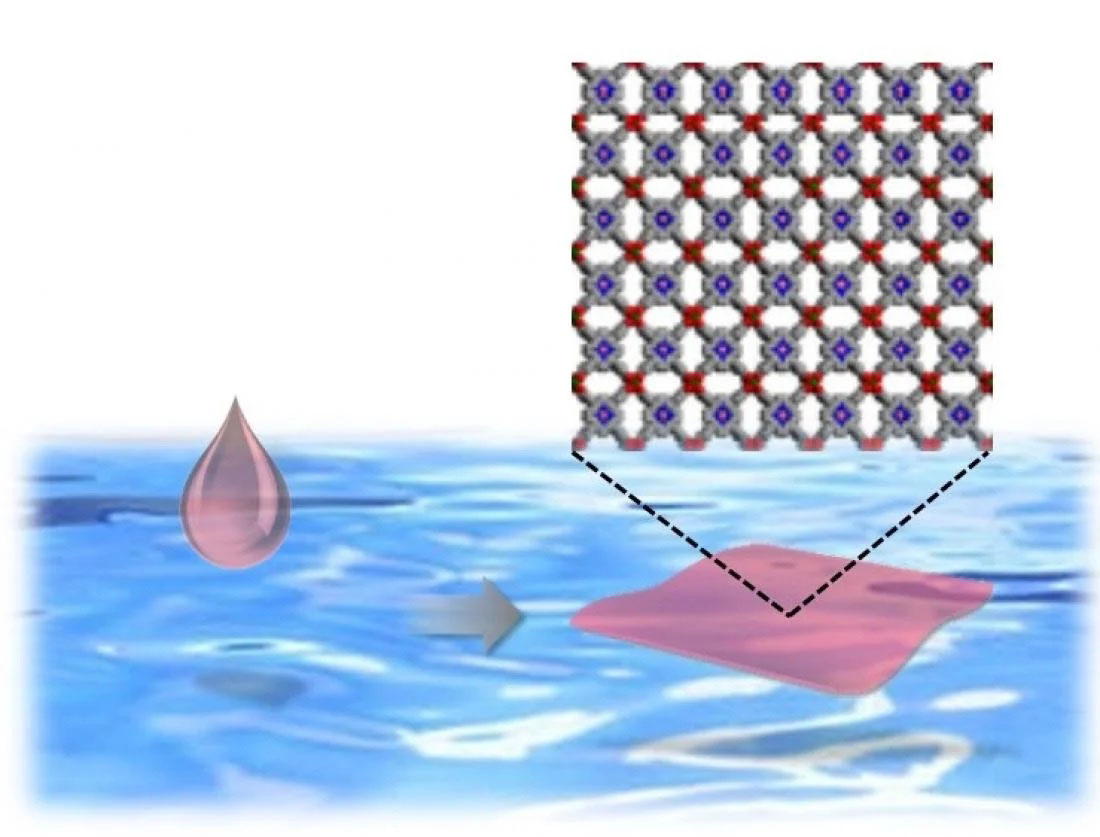Metal-Organic Nanosheets (MONs): 2D Materials for Diverse Applications
What are Metal-Organic Nanosheets (MONs)?
Metal-organic nanosheets (MONs) are a class of two-dimensional (2D) nanomaterials composed of metal ions or clusters coordinated with organic ligands. These ultrathin sheets, typically with a thickness of a few nanometers, exhibit unique properties arising from their 2D structure and the synergistic combination of metal and organic components.

Synthesis of MONs
MONs can be synthesized through various methods, including:
- Liquid-phase exfoliation: This method involves the exfoliation of bulk metal-organic frameworks (MOFs) or layered coordination polymers in suitable solvents to obtain single- or few-layer MONs. Ultrasound or shear forces are often employed to facilitate the liquid-phase exfoliation process.
- Bottom-up synthesis: MONs can be directly synthesized from metal and organic precursors using techniques such as interfacial synthesis, solvothermal synthesis, or chemical vapor deposition (CVD). These methods allow for the controlled growth of MONs with desired compositions and structures.
- Langmuir-Blodgett (LB) technique: The Langmuir-Blodgett technique is a powerful method for creating ultrathin, ordered films of amphiphilic molecules at the air-water interface. This technique has been adapted for the synthesis of MONs by spreading a solution of metal ions and organic ligands onto an aqueous subphase. As the metal ions and ligands interact at the interface, they self-assemble into a highly ordered, 2D metal-organic framework. The resulting MON can be transferred onto a solid substrate by dipping the substrate into the subphase and lifting it at a controlled speed. The LB technique allows for precise control over the thickness and composition of the MONs, enabling the fabrication of multilayer structures with tailored properties. Additionally, the LB method can be used to create patterned MONs by selectively depositing the nanosheets onto specific regions of the substrate using barrier-assisted compression or template-directed growth.
The Langmuir-Blodgett technique offers several advantages for the synthesis of MONs, including:
- Precise control over the thickness and composition of the nanosheets
- Ability to create multilayer structures with tailored properties
- Potential for patterning MONs onto specific regions of a substrate
- Mild processing conditions, allowing for the incorporation of delicate organic ligands
By leveraging the versatility of the LB technique, researchers can create highly ordered, ultrathin MONs with desired functionalities for various applications, such as catalysis, sensing, and energy storage.
Properties of MONs
MONs exhibit several unique properties that make them attractive for various applications:
High Surface Area
The 2D structure of MONs results in an exceptionally high surface area, which is beneficial for applications involving catalysis, sensing, and energy storage. The exposed metal sites and organic functional groups on the surface of MONs can interact with guest molecules, leading to enhanced performance in these applications.
Tunable Composition and Structure
MONs offer a wide range of tunability in terms of their composition and structure. By selecting different metal ions and organic ligands, researchers can engineer MONs with specific properties tailored for particular applications. The choice of metal ions can influence the electronic, magnetic, and optical properties, while the organic ligands can impart functionality, flexibility, and stability to the nanosheets.
Mechanical Flexibility
Unlike many inorganic 2D materials, MONs exhibit excellent mechanical flexibility due to the presence of organic ligands. This flexibility enables the fabrication of flexible and stretchable devices, such as wearable sensors and flexible electronics, using MONs as active components.
Applications of MONs
MONs find applications in various fields, including:
Catalysis
The high surface area and exposed metal sites of MONs make them promising catalysts for various chemical reactions, such as CO2 reduction, water splitting, and organic transformations. The 2D structure facilitates the accessibility of reactants to the active sites, leading to enhanced catalytic activity and selectivity.
Sensing
MONs can be used as sensitive and selective sensors for the detection of various analytes, including gases, biomolecules, and environmental pollutants. The specific interactions between the analytes and the metal-organic framework of MONs result in measurable changes in electrical, optical, or mechanical properties, enabling the development of high-performance sensors.
Energy Storage
MONs are promising electrode materials for energy storage devices, such as supercapacitors and batteries. The high surface area and redox-active metal sites of MONs contribute to high charge storage capacity and fast charge-discharge kinetics. Additionally, the porous structure of MONs allows for efficient ion transport, leading to improved electrochemical performance.
Separation and Purification
The porous nature and selective adsorption properties of MONs make them suitable for separation and purification applications. MONs can be designed to selectively adsorb specific molecules based on size, shape, or chemical affinity, enabling the efficient separation of gases, liquids, or biomolecules.
Challenges and Future Perspectives
Despite the promising potential of MONs, several challenges need to be addressed for their widespread application. One of the main challenges is the scalable synthesis of high-quality MONs with precise control over their composition, thickness, and lateral dimensions. Additionally, the stability of MONs under various environmental conditions, such as humidity, temperature, and pH, needs to be improved for practical applications.
Future research in MONs will focus on the development of novel synthetic strategies to produce MONs with desired properties and functionalities. The exploration of multi-component MONs, incorporating multiple metal ions or organic ligands, will expand the range of achievable properties and applications. Furthermore, the integration of MONs with other nanomaterials, such as graphene or transition metal dichalcogenides (TMDs), will lead to the development of multifunctional hybrid materials with synergistic properties.
Further Reading
Journal of Materials Chemistry A, Metal-organic framework nanosheets (MONs): a new dimension in materials chemistry
Coordination Chemistry Reviews, Metal-Organic Framework Nanosheets: Preparation and Applications
Coordination Chemistry Reviews, Creation of metal–organic framework nanosheets by the Langmuir-Blodgett technique
